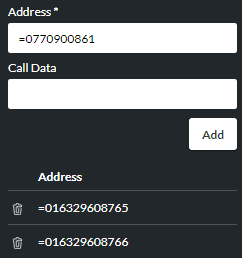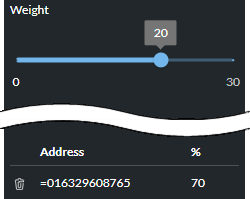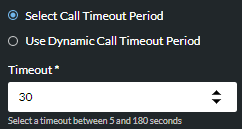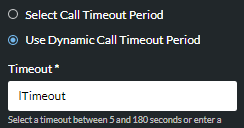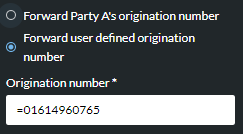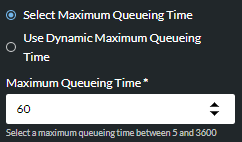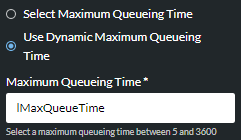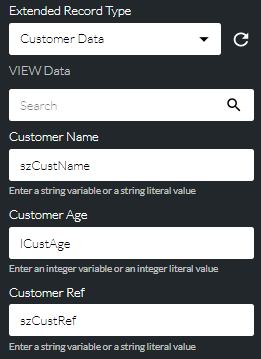Outbound Call
|
Routes incoming calls to destination telephone numbers. |
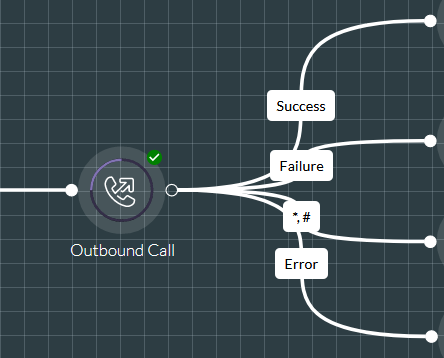
Use this to route a calls to a single number or to list of numbers that are tried randomly, sequentially, or according to a weighting. You can build a list of numbers directly in the action cell. If there is a list of numbers, the action cell works through the list trying each number until one connects. If no number in the list connects, the action cell exits along its Failure route.
You can also use the action cell to route calls to a third-party call centre or to a custom service. This requires a bespoke project to create the custom service. The calls are placed in a queue and forwarded to the call centre in the order in which they were received. The queue can be set up using storm UC and CONTACT (see the storm UC and CONTACT Configuration Guide for details) or it can be created automatically by the FLOW script.
Properties
Outbound Call Section
Use this section to configure the number(s) to dial.
|
Option |
Description |
|
Number Selection Type |
Select 'Sequential', 'Random', or 'Weighted'. |
|
Outbound Address Type |
Select 'Number List' to build the list in the action cell. Or, select 'Delivery Point List' to use a pre-configured delivery point or delivery point group. Delivery points are configured in storm STUDIO as explained in the storm STUDIO User Guide. A delivery point may be capped at a maximum number of simultaneous calls, typically corresponding to the number of agents who can take calls at that location. When allocating calls to delivery points, the system will call the first delivery point until the maximum number of simultaneous calls for that number is reached, and then proceed to the next in the list. |
|
Address/ Delivery Point |
If you are routing the call to a number list, enter a number to route to (as a literal preceded by =, or a string variable) and then click ADD to add it to the list below.
Or, if routing to a delivery point list, select the preconfigured delivery point/group.
|
|
This is shown for the 'Weighted' number selection type. If you have a list of destination numbers to dial, use the slider to select a percentage weighting for the number or delivery point you are adding. A destination assigned a 50% weighting is twice as likely to be selected for dialling as one that is assigned a 25% weighting, for example. When a selected number is dialled but is not connected on the first attempt, it is not retried. Another number is selected according to the weightings applied to the undialled numbers in the list.
The scale maximum reflects the percentage weight remaining as you add destinations. |
|
|
Call Data |
Use this if you want to capture data for a call. To do this, populate the field with a user variable based on the Call Data system variable. Click Add to add the entry to the list below. |
Media Section
Use this section to define the audio prompts to play to the called and calling parties.
|
Option |
Description |
|
Select Media List/ Use Dynamic Media List/ Media Lists/ |
Use this to select the media list that contains the prompts that you want to use in this action cell. See also, Use Media in a Script. |
|
Use Hold Prompt/ Select Media Item/ Use Dynamic Media Item/ Hold Prompt |
Select this if the calling party should hear hold music or a hold message when they are put on hold and then choose the hold music or message to play. See also, Use Media in a Script. |
|
Use Fail Prompt/ Select Media Item/ Use Dynamic Media Item/ Fail Prompt |
Select this if the calling party should hear a failure message if the outbound call fails and then choose the message to play. See also, Use Media in a Script. |
|
Use Whisper Prompt/ Select Media Item/ Use Dynamic Media Item/ Whisper Prompt |
Select this to play an audio message to the called party immediately prior to connection and then choose the whisper message to play. See also, Use Media in a Script. |
Options Section
Use this section to set timeout, routing and recording options.
|
Option |
Description |
|
Select Call Timeout Period/ Use Dynamic Call Timeout Period/ Timeout |
Specify the duration (in seconds) after which the service should deem the call routing attempt to have failed or the duration after which it should attempt the next number in the list, if present. Either select the timeout from a drop-down list:
Or, specify the timeout using a variable:
|
|
Forward A Party's Origination Number/ Forward User Defined Origination Number/ Origination Number |
Note: this property is disabled if an origination number has already been set for the script (possibly by another FLOW administrator). Select the number to show to the called party. Either forward the caller's number:
Or, enter a custom number as literal value (as shown below) or a string variable.
|
|
Record Call |
Select this to record calls. |
|
End Call if Recording Fails |
Select this if call recording is required for regulatory reasons. |
|
Select this to allow the called party to route the call back to the script by pressing a key (these are configured on the action cell's exit points). You must also ensure that a Call Data system variable is associated with the outbound number.
|
Call Queueing Section
Use this section if you want calls to busy outbound numbers to be placed in a first-in, first-out queue system. Alternatively, you can route calls to non-storm contact centre agents via anonymous queues.
|
Option |
Description |
|
Enable Call Queueing |
Select this to place a call in a first-in, first-out queue when the attempted outbound number is busy. The system will keep trying to route the call until the line becomes free. You can use this when routing calls to a third-party call centre. |
|
Set a Maximum Queueing Time |
Select Set a Maximum Queueing Time if you want to set a period for which a queued all should wait before the next number in the list is tried or (for the last or only number) execution should follow the cell's Failure exit point. This timeout overrides the call timeout period. Then, either use the first option to select a maximum queueing time from the options list:
Or, use the second option to provide the time using a variable:
|
|
Enable Anonymous Queue |
Select this to select a queue configured in storm UC and CONTACT instead of the system queue. |
|
Enable Queue Hold Script |
This is available if you have a custom script configured by Content Guru. Select this to use the custom script for handling the call while it is queued (such as playing particular messages). Contact your local support representative for advice on how to configure the displayed fields. |
Connected Call Script Section
Use this section if you want to use a custom service to run on call connection.
|
Option |
Description |
|
Enable Connected Call Script |
Select this if you want to use a custom service. Select the required service from the Service options list, and the name of the application from the Module list. Use the Input Variables section to build a list of variables to pass to the custom service. In the Name field, enter the name of the variable as recognised by the service. In the Value field, provide the value to pass (use a literal value prefixed by =, or a string variable). Click ADD to add the Name/Value pair to the list below. Use the Output Variables section to build a list of variables that are returned from the custom service. |
VIEW Data Section
Use this section if you want to populate extended record fields (that are set up in storm VIEW) with values stored in user variables for outbound calls routed by this action cell.
|
Option |
Description |
|
Set VIEW Data |
Select this if you want to populate extended record fields for outbound calls. Select the extended record created in VIEW. This displays the committed fields defined for the record. For example:
You must limit each field to 2048 characters. If the total size of all fields exceeds a limit of 3900 bytes, they will each be truncated to a total size matching this limit. |
Exit Points
|
Exit Point |
Description |
|
Success |
This is taken when the called party ends the outbound call. |
|
Failure |
This is taken when all attempts to route the call have failed. |
|
B Party Keypress |
This is enabled if the Enable DTMF Exit option is enabled in the Outbound Call Section of the action cell properties. It is taken when the called party presses the configured key(s). |
|
Error |
This is taken if the prompt to re-record or any media files configured on the Media tab could not be located. |
|
Withdrawn from Queue |
This is available if the Enable Queue Hold Script option is enabled in the Call Queueing Section of the action cell properties. It is taken if the custom script supports a withdrawal option (for example, the caller requests a callback). |
